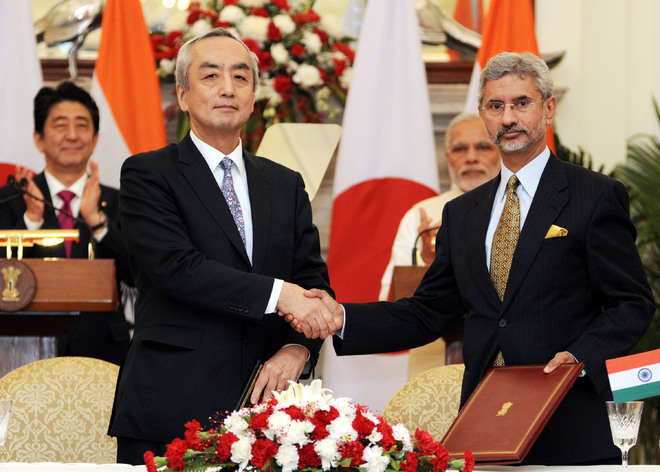Ajay Banerjee,Tribune News Service,New Delhi, December 12

Today’s military-diplomatic moves between India and Japan fit into what, among strategic circles, is referred to as a “security diamond”—an alliance or a close-knit group comprising India, the US, Japan and Australia.Prime Minister Narendra Modi and his Japanese counterpart Shinzo Abe in a joint statement today made it clear that Japan would be a permanent partner in the much-watched navy exercise named “Malabar” – the last one conducted in the Bay of Bengal in October included a “hunt for a submarine”.The joint statement said: “The two prime ministers welcomed Japan’s participation in the India-US Malabar exercises on a regular basis, as it would help create stronger capabilities to deal with maritime challenges in the Indo-Pacific region.” This is what India tried in 2007 and then backed off under pressure from China that had protested against such an India-US-Japan grouping and termed it “anti-China”.The “security diamond” got boost recently when India-Japan-Australia launched their trilateral dialogue in addition to the existing India-US-Japan dialogue. The moves fall in place with Prime Minister Abe’s advocated “security diamond” policy. In December 2012, Abe in an essay posted on the website of Project Syndicate, a Prague- and New York-based non-profit syndicate of newspapers from around the world saying, “I envisage a strategy whereby Australia, India, Japan and the US state of Hawaii form a diamond to safeguard the maritime commons stretching from the Indian Ocean region to the western Pacific.”
